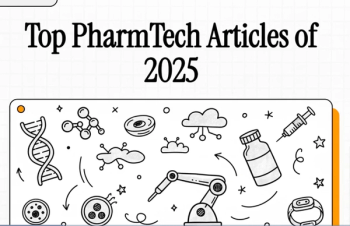Editor’s Note: This article was published in Pharmaceutical Technology Europe’s December 2021 print issue.
- Pharmaceutical Technology, December 2021 Issue
- Volume 45
- Issue 12
Accelerating Project Delivery with a Lean Alternative to DBB
Lean delivery offers a promising solution to supply and manufacturing bottlenecks by integrating project teams early on and widening the team’s field of view.
In 2020, as the pandemic forced many industries to slow down, pandemic-focused project delivery teams were moving faster than ever. Their goal was to expand the world’s COVID-19 vaccine manufacturing capacity in record time, even while the vaccine candidates themselves were still in development.
With so many unknowns and such immense pressure to move at warp speed, how did those project teams ready themselves to succeed? For many, the solution lay outside of traditional design-bid-build (DBB) delivery. Like a relay race, DBB moves forward in phases, with one group completing their section while the next awaits a handoff. With no time for such a linear approach, teams working on pandemic-related expansions embraced a model that looks less like a relay and more like a synchronized swim. They brought all project stakeholders to the table early, from executive-level decision-makers to construction subcontractors to equipment vendors. Instead of boxing themselves into individual phases, these cross-functional teams worked to integrate their project delivery steps, relying on collaboration and parallel delivery to reduce rework and address known supply and manufacturing bottlenecks.
As a result of this historic effort, COVID-19 vaccine manufacturers around the world are now collectively producing 1.5 billion doses per month (1), with capacity growing all the time. It’s a scale-up success story like no other, and it demonstrates what can happen when companies look for alternative delivery methods that lie beyond the long shadow of DBB.
Forward-thinking drug manufacturers would be wise to take notice, particularly as the pandemic’s ‘warp speed’ mentality takes over the industry—a phenomenon that CRB confirmed in a recent survey of North American companies from across the life sciences (2). More than 500 respondents ranked speed-to-market among their lowest business drivers before the pandemic; today, it’s their top priority by a wide margin.
In the European Union (EU), where biotech investment—and, correspondingly, investors’ pressure to move fast’—rose by 39% between January 2020 and January 2021 (3), project leaders are equally hungry for speed, if not more so. To satisfy that appetite, delivery teams need to go lean. That’s the key to completing projects up to 50% faster.
Lean principles
But what exactly does it mean to ‘go lean’? In an apparent contrast to its name, lean means integrating more people into the project team early on and widening that team’s field of view. Client executives, design and construction experts, trade partners, vendors, and commissioning and qualification specialists join forces
from day one, eyeing the finish line from the starting blocks. Working together, this cross-functional team can achieve cost and timing certainty within the first 15% of the project’s total schedule. This clears the way for teams to initiate parallel, highly efficient workstreams. Even before construction begins, for example, they can ship drawings for long-lead equipment to manufacturers, exploiting the benefits of offsite fabrication and finding stability despite a drop in Europe’s manufacturing output and ongoing supply chain disruption (4).
For all of this to work, project teams need not only the will of owners to release their grip on DBB, but also a set of flexible, tested-and-true principles designed for lean delivery. These principles help to redistribute the risks and rewards of a capital project so that individual interests are subordinated to the overall project outcome. They facilitate complex relationships across the EU and around the world, making it possible to bring the right experts to the project at the right time, regardless of where those experts are located. Most of all, these lean principles will help teams deliberately establish and maintain a culture of trust and accountability throughout the design and construction lifecycle, incentivizing collaborative decisions and goal alignment—a necessary condition for moving fast. The following is a sample of those lean principles in action.
1. Model the culture from the top down. The culture of trust and transparency that we’re prescribing cannot flourish without support from project leaders and owners. They are responsible for creating an environment in which lean can thrive—an environment in which redundant effort is eliminated and team members are selected early and respected for their qualifying expertise. For that to happen at all, it must first happen in the executive suite.
2. Bring the project team together early in the delivery process. For lean delivery to work, project teams must be not only willing to integrate and overlap project phases that were traditionally sequential, they must also integrate team functions that, in the past, may have had little overlap. That means engineers working shoulder-to-shoulder with trade representatives, each expert contributing their perspective to help build certainty into early designs and to reduce the frequency and volume of time-consuming information handoffs throughout the project.
3. Define the project’s conditions of satisfaction in a project charter. A project charter is part navigational instrument, part code of behaviour, and part onboarding tool. It’s co-authored early in a project’s lifecycle by the integrated delivery team, and while the charter itself is important (it defines vital elements such as schedule, target costs, conditions of satisfaction, etc.), the process of creating that charter is equally valuable.
This process creates an opportunity for team members to practice the behaviours that make lean delivery successful, like communicating openly and finding alignment across disciplines. Getting the chartering process right can make a big difference to a lean project’s outcome, which is why many lean teams rely on experienced chartering facilitators to start them off in exactly the right way.
4. Enable the culture with lean tools. All the bureaucracy in the world can’t achieve what a culture of trust and transparency can, and with the right tools to uphold it, that culture can pull even the most ambitious projects through the complexities of an accelerated timeline, a turbulent global supply chain, and a heavily regulated environment. These tools may include:
- A big room: A central location, often virtual, where client representatives, project designers, construction managers, trade partners, and other stakeholders work next to one another. This ‘shoulder-to-shoulder’ concept of co-location greatly reduces the ‘churn’ often involved in seeking answers from a more traditional, decentralized project team. As a result, decision-making is faster, smarter, and more balanced against the needs of the project as a whole.
- Last planner system/pull planning: This approach, which applies to all project phases from design through delivery, ensures that the team members who schedule tasks and make promises are the same people responsible for doing the work. This contributes to the ethos of accountability and trusted partnership that defines lean delivery.
- Building information modelling (BIM): Cloud-based BIM software is as much a communication platform as it is a tool for optimizing facility design, which makes it an important enabler of lean delivery. By allowing project owners, equipment vendors, trade partners, and other stakeholders from across the EU to co-author a single, harmonized digital model, today’s advanced BIM applications facilitate real-time feedback and help remote teams run scenarios, identify potential design clashes, and coordinate equipment far in advance of installation.
Today’s emerging experiential technologies, like augmented reality, are extending the role of BIM software in facilitating lean delivery by instantly ‘transporting’ a team member in Basel (Switzerland), for example, right to a job site in Ditzingen (Germany), where that team member can collaborate seamlessly with on-the-ground trade partners. - Target value delivery (TVD): Under the premise of TVD, cost drives design, not the other way around. As a result, every team member shares ownership of the budget (and the business case driving that budget). This philosophy may sound simple, but it effectively addresses the complex issues of cost overruns that plague so many construction projects.
Leaning into a new way forward
Those who know lean delivery know this: to move faster without losing quality or cost control, you must lose your unnecessary or redundant processes. Lose your barriers to collaboration. Lose the belief that there is only one right way to manage risk and deliver a complex capital project.
In exchange, you will gain momentum and flexibility, and the level of deep team integration that’s necessary to make a project work across multiple countries and on an accelerated schedule. The project teams working to expand our global COVID-19 vaccine manufacturing capacity know this, and soon more teams across our industry will experience the benefits of lean delivery on their own projects, too.
Of course, it’s not as though traditional project delivery is about to disappear altogether. Certain projects (and certain project leaders, accustomed to their well-established ways of working) will suit its sequential systems, which offer their own rewards. But the rewards of lean delivery are too plentiful and too assured to ignore. Speed comes much more easily to teams that are moving in the same direction, without the freight of unnecessary checks and balances. That direction, for lean delivery teams in this age of scientific breakthrough, is up, up, and away.
References
1. IFPMA, “Momentum of COVID-19 Vaccine Manufacturing Scale Up Sufficient for Step Change in Distribution,” Press Release, 7 Sep. 2021.
2. CRB, Horizons: Life Sciences Report (November 2021).
3. L. Cancherini, et al., “What’s Ahead for Biotech: Another Wave or Low Tide?” McKinsey & Company, Article, 30 April 2021.
4. F. O’Brien, “Europe’s Recovery Threatened by Supply-Chain, Inflation Squeeze,” Bloomberg, News Story, 23 July 2021.
About the Authors
Rasmus Kidmose is European Business Development director, Eric Unrau is vice-president of Operations, Europe, and Can Aktar is leader of the Basel office, all at CRB.
Article Details
Pharmaceutical Technology Europe
Vol. 33, No. 12
December 2021
Pages: 34–36
Citation
When referring to this article, please cite it as R. Kidmose, E. Unrau, and C. Aktar, “Accelerating Project Delivery with a Lean Alternative to DBB,” Pharmaceutical Technology Europe 33 (12) 2021.
Articles in this issue
about 4 years ago
Digitalization Moves Forward in Pharma Equipment and Processesabout 4 years ago
Digital Transformation Project Reduces Downtimeabout 4 years ago
Using Tolerance Intervals to Assess Conformance to Requirementsabout 4 years ago
It’s a Matter of Taste-Maskingabout 4 years ago
Stabilization of Amorphous APIsabout 4 years ago
Trends in Isolator Equipmentabout 4 years ago
Analytics Advances for Optimizing Downstream Processesabout 4 years ago
Looking Past the Pandemic: The Future of GMPs in Aseptic Processingabout 4 years ago
Not a Particle of Doubtabout 4 years ago
The Key Elements for Assay Transfer SuccessNewsletter
Get the essential updates shaping the future of pharma manufacturing and compliance—subscribe today to Pharmaceutical Technology and never miss a breakthrough.





